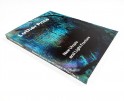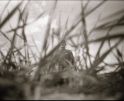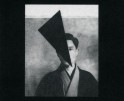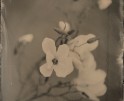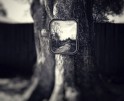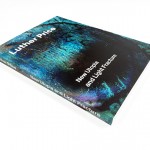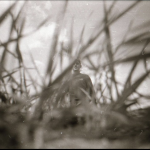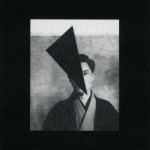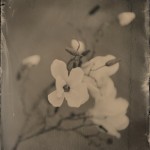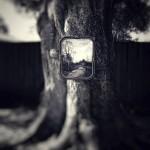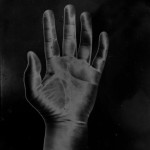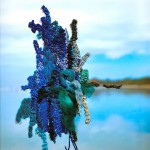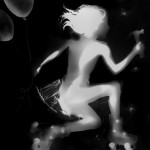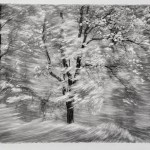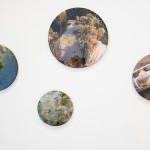Kali Spitzer: Explorations of Resilience and Resistance / Our Backs Hold Our Stories
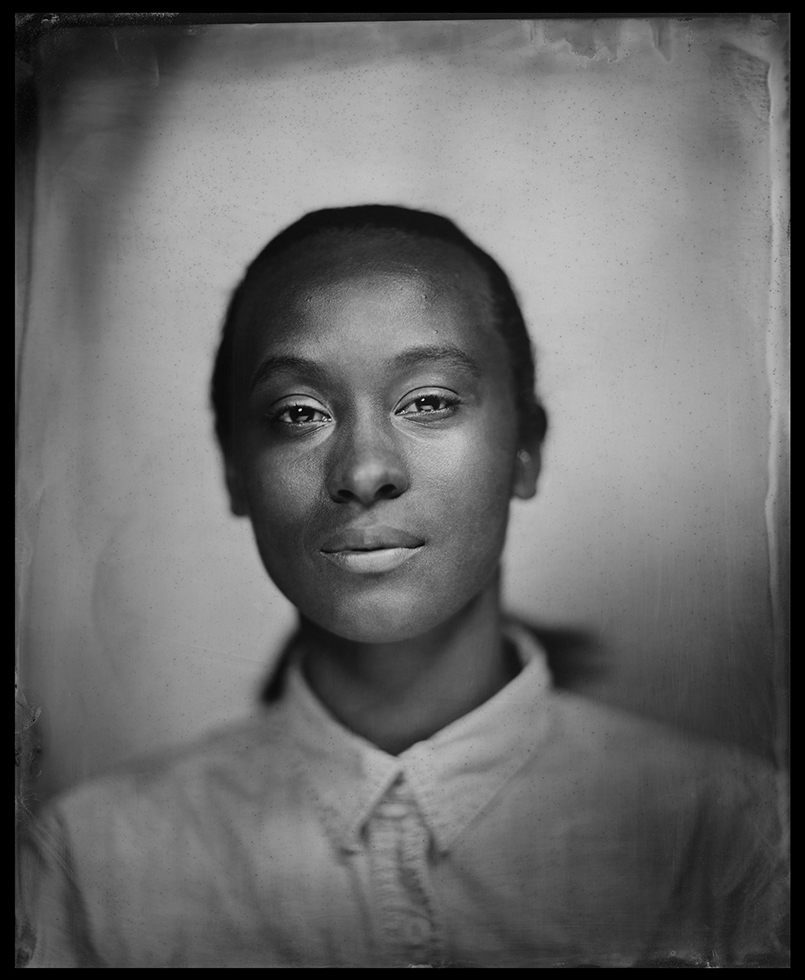
© KALI SPITZER “Kiniaii_07” 2023
Explorations of Resilience and Resistance / Our Backs Hold Our Stories
An Exploration of Resilience and Resistance is an ongoing project that began in 2014. Through the timeless lens of tintype photography I photograph my community of primarily Indigenous and mixed heritage people to illuminate our stories. – Kali Spitzer
To celebrate Denver’s Month of Photography, East Window Gallery is exhibiting Explorations of Resilience and Resistance / Our Backs Hold Our Stories, a series of stunningly poignant portraits by Kali Spitzer. I recently interviewed the artist to learn more about her work and the process of creating it.
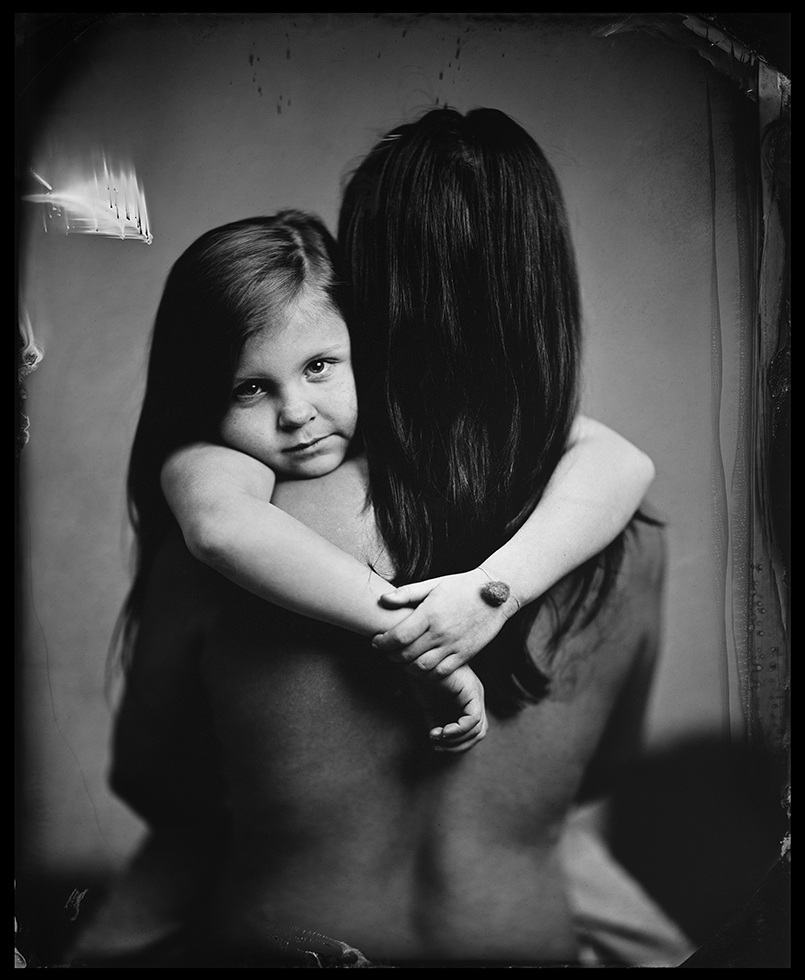
©KALI SPITZER ”BetsySawBisou,BisouSawBetsy_13” 2023
Kellye Eisworth: The title of the exhibition is Explorations of Resilience and Resistance / Our Backs Hold Our Stories. What led you to that title, and what do you hope it communicates to the viewer?
Kali Spitzer: As part of my ethics around photography I am always updating my use of language. The English language itself is complicated and at times limited. Originally I had titled the series An Exploration of Resilience after time and consideration I realized the title I had given this series felt complicated. We did not choose to be resilient, we were forced into resiliency by our oppressors. The violent history of colonization is not something we chose…
I added Resistance to the title as this is something that we had agency over. We chose to resist and still do, daily. This title speaks not only to our history but to our power, our spirit and our healing.
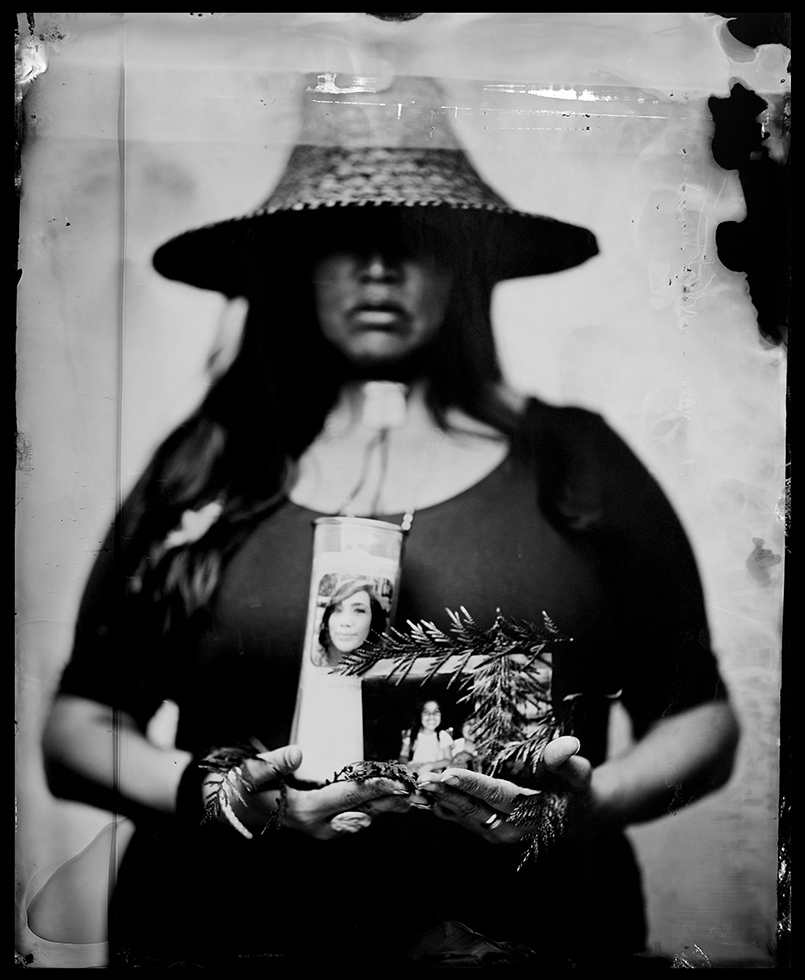
© KALI SPITZER “Honouring_Maria_09” 2023
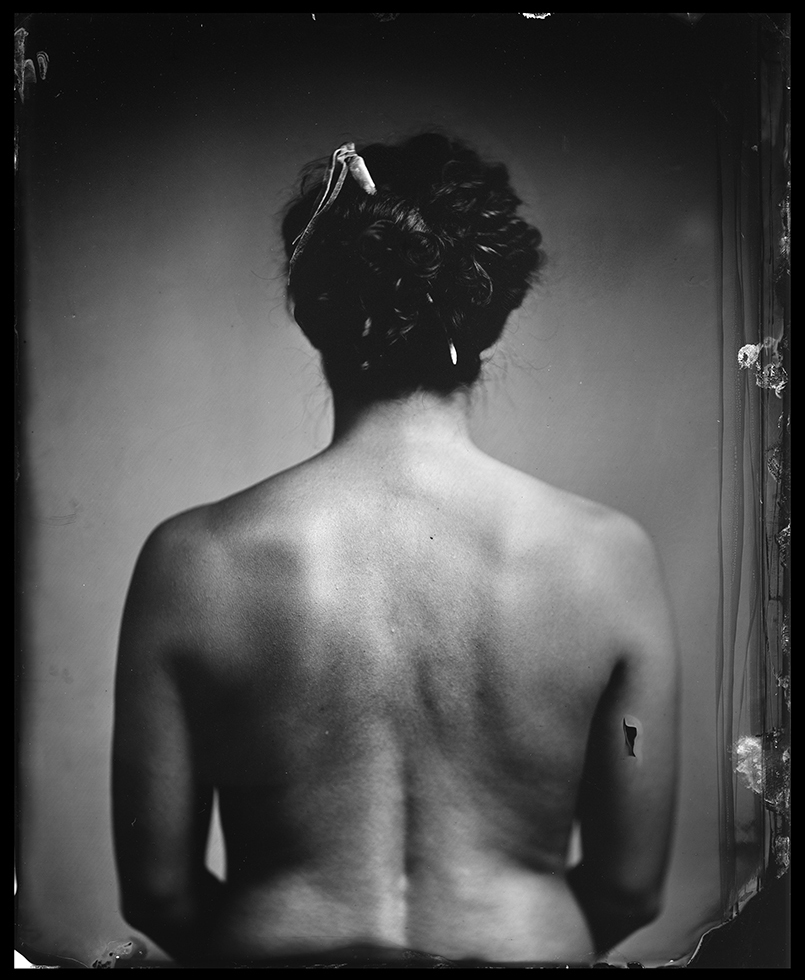
© KALI SPITZER “Our_Backs_Hold_Our_Stories_02” 2023
Our Backs Hold Our Stories was created after An Exploration of Resilience and Resistance to focus on and celebrate the strength of women and non-binary kin and the stories our bodies hold. Indigenous women and non-binary folks experience violence at an alarming rate. Creating work that culminates in space to draw attention to this is a crucial part of my practice.
Our backs are a source of vulnerability. While vulnerability is fragment of what is observed in these photos it is not the complete picture. Our backs hold so much of our strength and our power. Our backs carry our bodies, hold our heads up high, they bear our stories and each individuals history. So much ferocity lives in this one part of our body. Let’s celebrate that.
Our Backs also brings the viewer to ask the question; does a portrait need to be of a face? I don’t believe so, portraits are created to celebrate and witness someone and this can be extended to any part of a person, including their back.
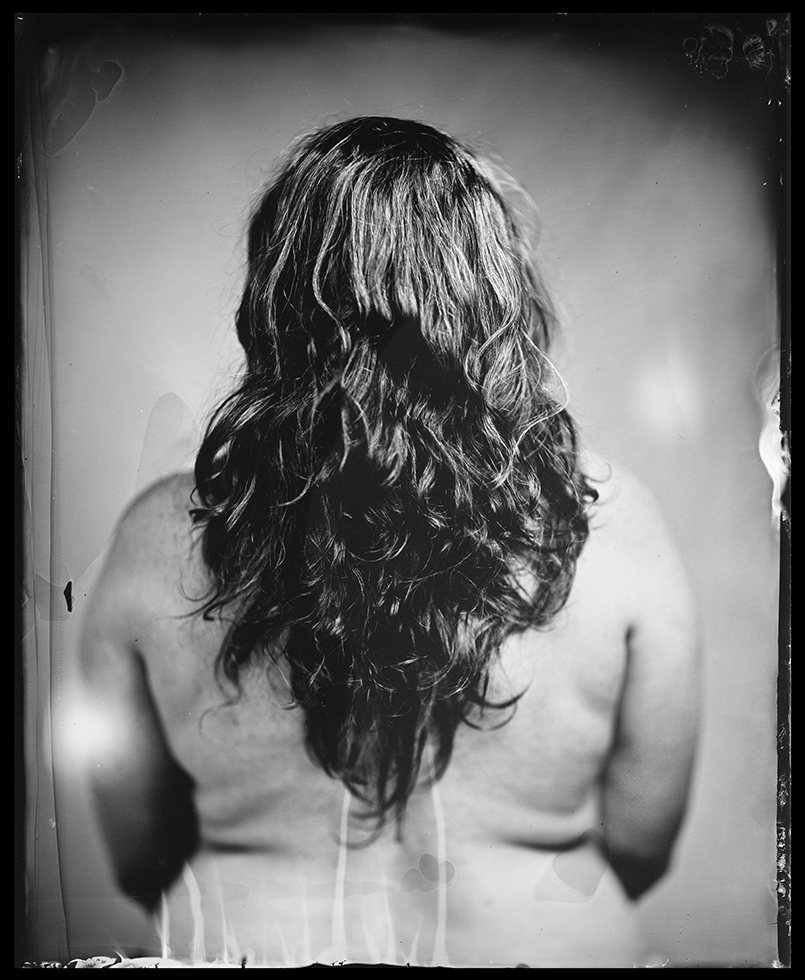
© KALI SPITZER “Our_Backs_Hold_Our_Stories_05” 2023
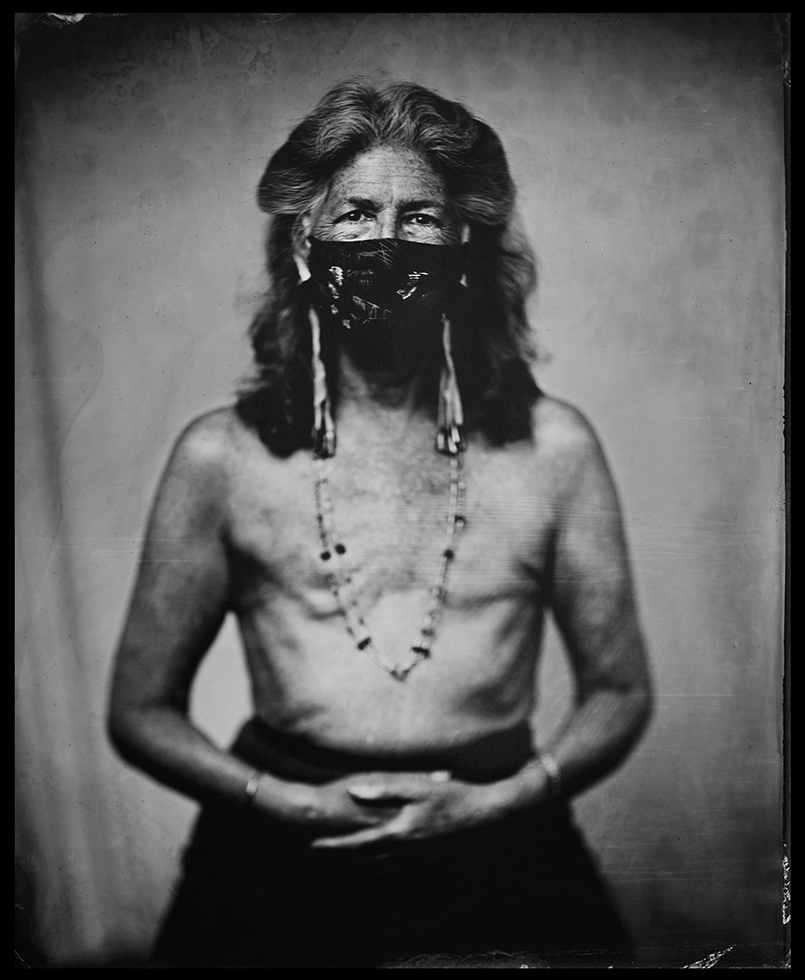
© KALI SPITZER “Eloise_Spitzer_11” 2023
KE: In your writing, you describe your photographic practice as a collaborative process. Can you talk a little bit about these collaborations and your relationships with your subjects?
KS: Thank you for this question – I would like to begin by noting that as part of my photographic practice I am trying to change the language used in photography to mirror how I am working to heal the colonial history of the medium. This means that I refrain from using the word “subject.” This word does not describe a process of creating with someone, but creating of someone. This is why I use the word “collaborator” when speaking about the people I photograph!
I view all photographs as a collaborative process. While it is my eye that defines the photograph, for the most part I am photographing something that already exists, I am interacting with and collaborating with someone to create the image. Because of the nature of the art, I don’t think we can call photography anything other than a collaboration.
My work is first and foremost for the people in my images, it is a gift that I then get to share them with you. I would not be able to make my work with out the people I photograph. I mostly photograph people that I already have relationships with, that I already have trust with. I feel this lends well to the work I am making. No matter how well I know someone I always learn new things about them by making work together, the collaboration often deepens our relationship in some way.
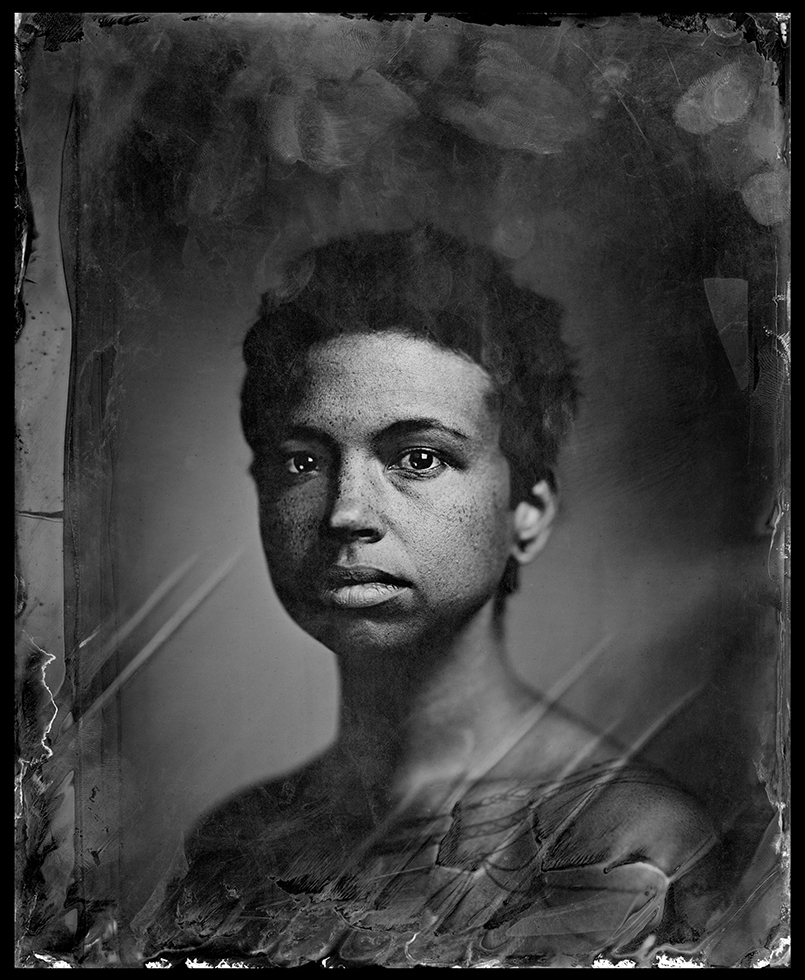
© KALI SPITZER “Holland_Andrews_10” 2023
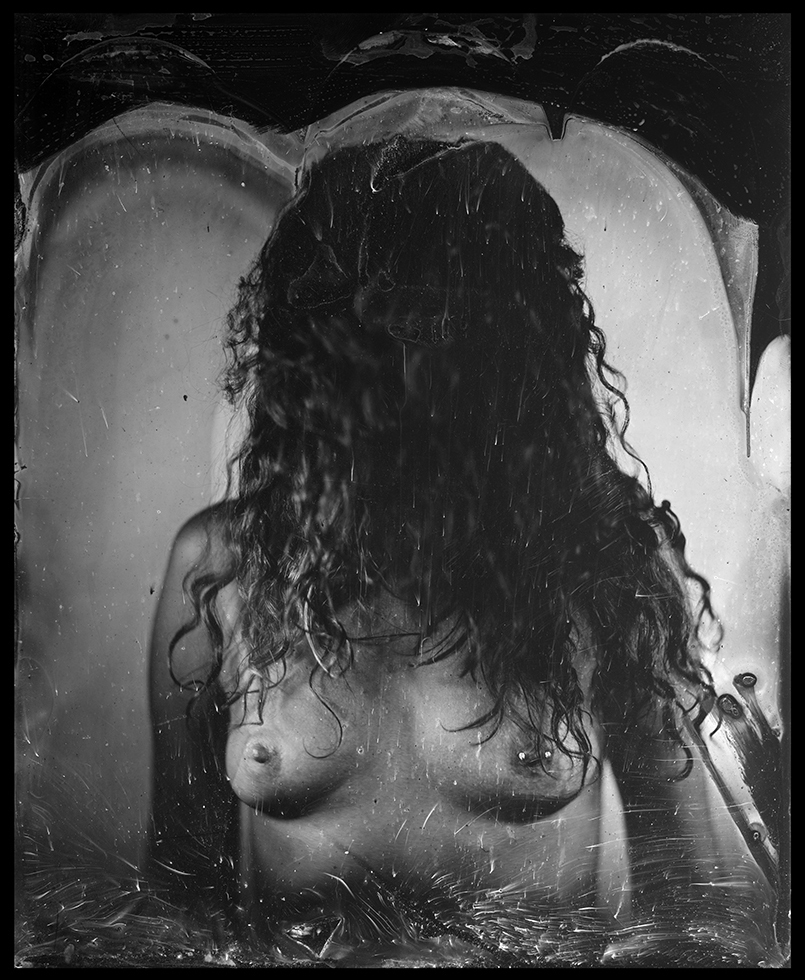
© KALI SPITZER “Kali_08” 2023
KE: One of the things that makes this work so striking is the juxtaposition of subjects whose gazes directly confront the viewer and images in which the subjects’ identity is obscured in some way. Was that an intentional decision, and what is its significance?
KS: I want to uplift and honour my community and celebrate us for who we are. The visual choices that I make support this idea through a variety of avenues. As BIPOC fight to be accurately represented in all spaces I hope to create work that allows for human connection between the person in the image and the viewer of the image. This can be done by creating portraits where someones eyes are the focus, or by placing the focus elsewhere, such as someones back. Each is powerful in its own right.
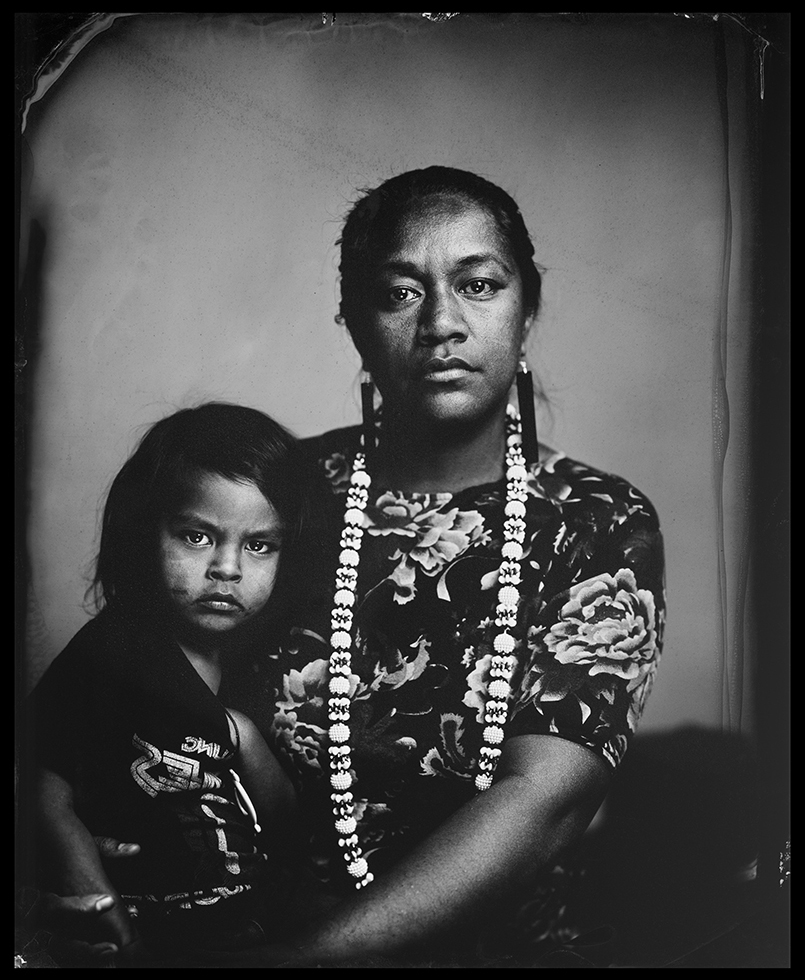
© KALI SPITZER “Cora-Allen Wickliffe and Son Chaske-Waste Kaitiaki Twiss_12” 2023
Portraits where the the sitters gaze confronts the viewer, the viewer must contemplate their relationship to us. I often print these images large scale so that the viewer must look up at us, creating a shift in perspective. I urge people to really look into our eyes and create a connection. Many of my images are accompanied by voice recordings, that allow you to listen to someones words, stories, songs or poems. It is an honour to be in each person’s presence, and I hope the viewer experiences this as they look and listen.
Our Backs Hold Our Stories leaves the viewer curious, wanting to know more about the people in the images; what are the histories depicted on ones back? These images demonstrate the power of choice, what to share and what to protect as well as where vulnerability and preservation intersect and diverge.
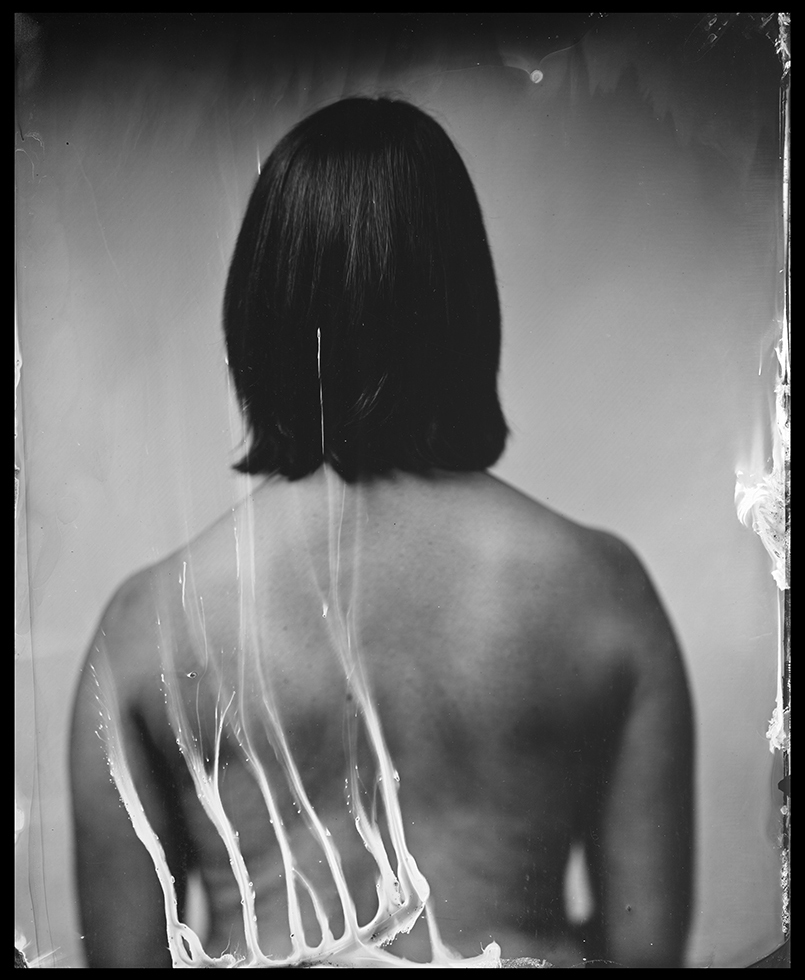
© KALI SPITZER “Our_Backs_Hold_Our_Stories_03” 2023
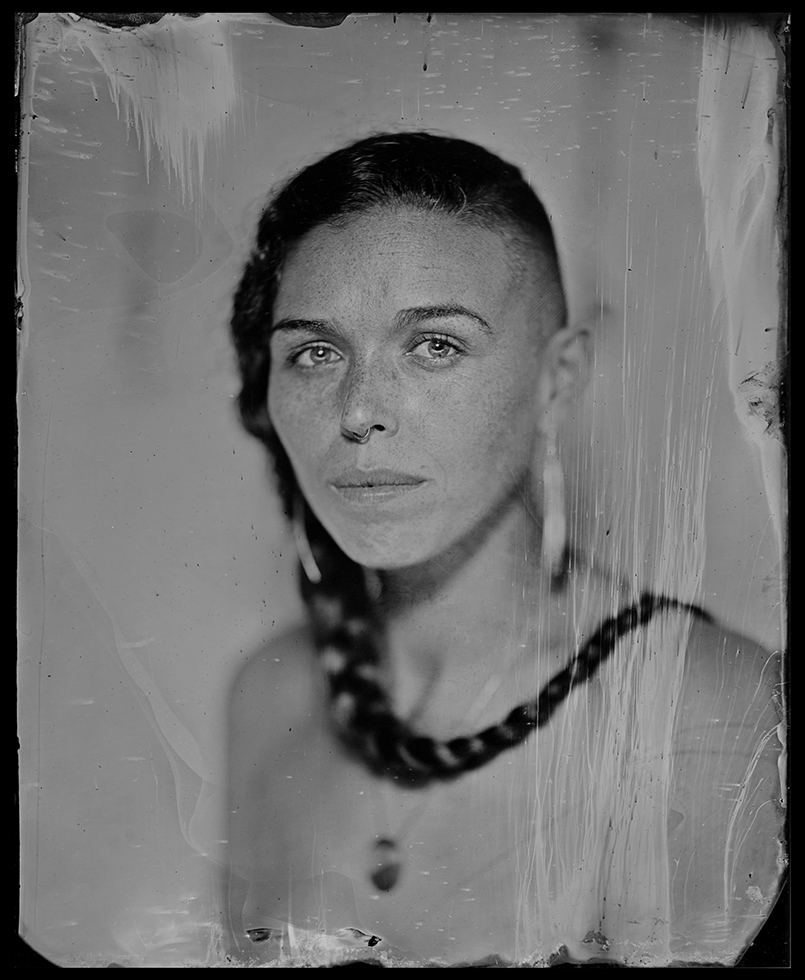
© KALI SPITZER “Larrissa_Grieves_06” 2023
KE: This series is one of the only bodies of work in which you use wet plate collodion to record your subjects. As a viewer, I am immediately reminded of the early photographs made of Indigenous peoples during the colonization of this country and the trauma they represent. Is that something you were thinking about when you decided to use this process?
My mentor Will Wilson that I studied under starting in 2013 has made incredible work directly responding to Edward E. Curtis, I would highly recommend looking it up!
My work focuses on taking back the medium of photography, wet plate included, to mend the violent history of photography used as a tool of oppression and colonization. Our relatives were and continue to be inappropriately photographed and mis/under-represented. I believe that healing begins through collective witnessing, I want to show the general public who we are today; to bring light to our stories and create a space for us to be seen and heard as we define ourselves and make it clear how we want to be represented. The focus of my work is more about healing and celebration than it is a direct response to specific photographers in history.
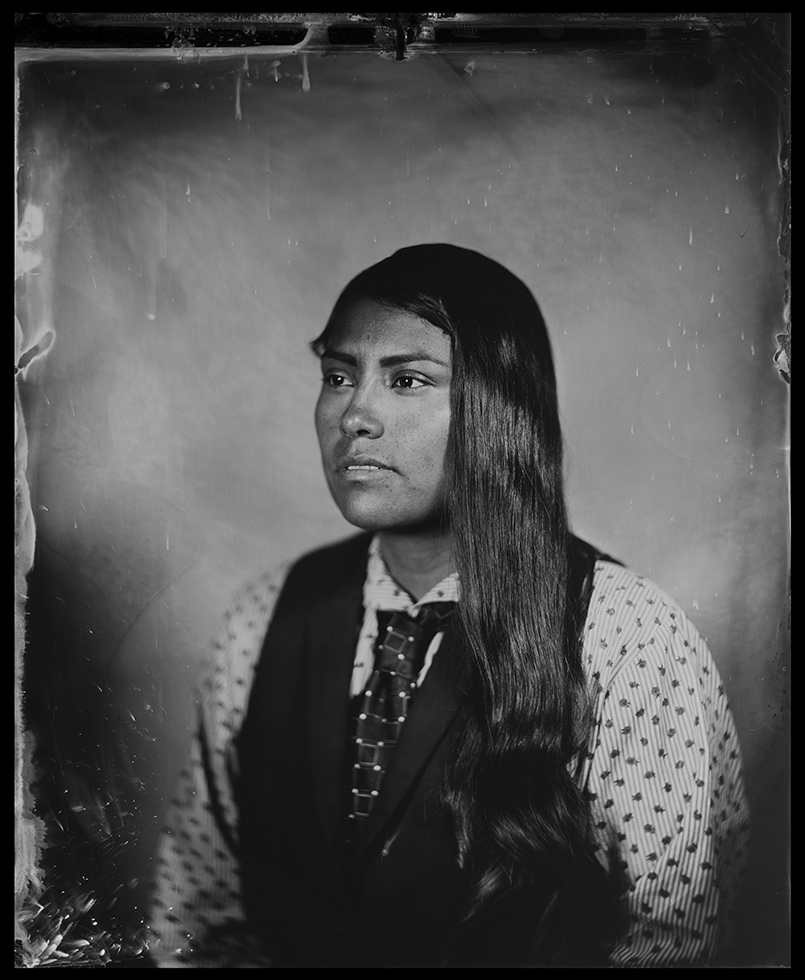
© KALI SPITZER “Angel_Mills_14” 2023
About the Artist:
Kali Spitzer is a photographer living on the Traditional Unceded Lands of the Tsleil-Waututh, Skxwú7mesh and Musqueam peoples. The work of Kali embraces the stories of contemporary BIPOC, Queer and trans bodies, creating representation that is self determined. Kali’s collaborative process is informed by the desire to rewrite the visual histories of indigenous bodies beyond a colonial lens. Kali is Kaska Dena from Daylu (Lower Post, british columbia) on her father’s. Kali’s father is a survivor of residential schools and canadian genocide. On her Mother’s she is Jewish from Transylvania, Romania. Kali’s heritage deeply influences her work as she focuses on cultural revitalization through her art, whether in the medium of photography, ceramics, tanning hides or hunting.
Kali studied photography at the Institute of American Indian Arts, and the Santa Fe Community College. Under the mentorship of Will Wilson, Kali explored alternative processes of photography. She has worked with film in 35 mm, 120 and large format, as well as wet plate collodion process using an 8×10 camera. Her work includes portraits, figure studies and photographs of her people, and culture. At the age of 20, Kali moved back north to spend time with her Elders, and to learn how to hunt, fish, trap, tan moose and caribou hides, and bead. Throughout Kali’s career she has documented traditional practices with a sense of urgency, highlighting their vital cultural significance.
Kali’s work has been featured in exhibitions at galleries and museums internationally including, the National Geographic’s Women: a Century of Change at the National Geographic Museum (2020), and Larger than Memory: Contemporary Art From Indigenous North America at the Heard Museum (2020). In 2017 Kali received a Reveal Indigenous Art Award from Hnatyshyn Foundation.
Kali would like to extend her gratitude to all who have collaborated with her, she recognizes the trust and vulnerability required to
Follow Kali Spitzer on Instagram: @kali_spitzer_photography
About the Gallery:
East Window & Gallery supports and promotes diverse artistic practices and the ideas that surround them. We are driven by the initiative to be a safe place for creative expression by people of all backgrounds and communities.
Our resolve is to bring visibility to historically marginalized artists who exist in all communities of color, including Black, Indigenous, Asian, people who are LGBTQ+, Two-Spirit, Gender Non-Binary, and People with Disabilities and Chronic Illness.
Our goal is to promote the art and culture of these underrepresented communities and provide a platform for people from all backgrounds to share their hearts and minds through exhibitions and public programming.
East Window is an exhibit window viewable outdoors from the east side of our building. East Window Gallery is an indoor art gallery and creative space, and is currently open by appointment.
East Window & Gallery is located on ancestral lands of the Arapaho, Cheyenne, and Ute tribes. Consciously or unconsciously we all currently benefit from the historic and ongoing injustices committed against these and other Native peoples of this land. Therefore, we would like to acknowledge these tribes, the many other tribes who have traveled through the area, as well as any federally unrecognized tribes who first stewarded this territory.
Follow East Window on Instagram: @eastwindow1
Explorations of Resilience and Resistance / Our Backs Hold Our Stories will be on view through June 28th, 2023.
The East Window will host an in-person artist talk on March 22, 7 pm (MST).
Posts on Lenscratch may not be reproduced without the permission of the Lenscratch staff and the photographer.
Recommended
-
Luther Price: New Utopia and Light Fracture Presented by VSW PressApril 7th, 2024
-
Artists of Türkiye: Sirkhane DarkroomMarch 26th, 2024
-
European Week: Sayuri IchidaMarch 8th, 2024
-
European Week: Steffen DiemerMarch 6th, 2024
-
Rebecca Sexton Larson: The Reluctant CaregiverFebruary 26th, 2024

